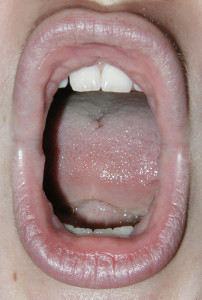A great photo to analyze nonverbals. What does this photo say to you? Japan’s Yuzuru Hanyu (and his coach’s) reaction to his world record setting figure skating short program score at the 2014 Sochi Winter Olympics.

An Aggregator for Blogs About Social Engineering and Related Fields
A great photo to analyze nonverbals. What does this photo say to you? Japan’s Yuzuru Hanyu (and his coach’s) reaction to his world record setting figure skating short program score at the 2014 Sochi Winter Olympics.

 A recent study purports that people who fully confessed after lying when given the opportunity to come clean, felt better than those who partially confessed. The study which was published in the American Psychological Association’s Journal of Personality and Social Psychology was comprised of researchers from Carnegie Mellon University in Pittsburgh and Ben-Gurion University of the Negev in Israel.
A recent study purports that people who fully confessed after lying when given the opportunity to come clean, felt better than those who partially confessed. The study which was published in the American Psychological Association’s Journal of Personality and Social Psychology was comprised of researchers from Carnegie Mellon University in Pittsburgh and Ben-Gurion University of the Negev in Israel.
“Confessing to only part of one’s transgressions is attractive to a lot of people because they expect the confession to be more believable and guilt-relieving than not confessing. But our findings show just the opposite is true,” lead author Eyal Peer, Ph.D., told the American Psychological Association.
According to the research paper and Fast Company.com, 4,167 participants were surveyed online across the country in multiple experiments. In one experiment participants were asked how many times they accurately predicted the outcome of 10 coin tosses (heads/tails). Researchers used the incentive of earning money for every correct prediction.
In comparison to previous studies, which focused more on a complete confession or complete lie, this study takes into account the partial lie, which is probably more realistic.
After they reported their results, participants were given the opportunity to confess if they over-reported their number of correct guesses, without penalty. Of the approximately 2,100 participants, 35% cheated. Of that group, approximately 18% (or 139 participants) confessed to cheating, with nearly 40% partially confessing and 59% making a full confession.
So why are partial lies less satisfying than a purge of an entire lie?
According to the study coming clean allows you to move on, which relieves a person’s guilt. However, people who’ve been dishonest and decide to partially confess do so most often to appear more credible to others while still being able to reap the benefits of their dishonest behavior.
By limiting the extent of their confession, the study suggests, the partial confessor may feel more credible but it comes at an emotional cost -feeling worse than those who fully confessed.
“People seeking redemption by partially admitting their big lies feel guiltier because they do not take complete responsibility for their behaviors. True guilt relief requires people to fully come clean,” Peer said.

Courtesy of StockVault
We are all familiar with the notion that our facial muscles relax and contract with the emotions that we display on it, which are more often than not involuntary, depending on how we feel. Researchers in Tokyo have identified a similar link between taste and its involuntary display of certain facial expressions based on the different tastes we experience.
Red Orbit reports on this new research which lends itself to the researchers past trials that noted changes in the skin blood flow in the eyelid and nose in response to basic sweet, umami (pleasant savory) and bitter tastes. Now the researchers have extended the study to identify a correlation between changes in circulation in specific parts of the face and the subjective palatability of different complex tastes such as the sweet and sour taste of orange juice.
Hideaki Kashima, Yuka Hamada and Naoyuki Hayashi from the Prefectural University of Hiroshima, Kyushu University and Tokyo Institute of Technology studied 15 test subjects with flavors ranging from sweet chili, orange juice, bitter tea, soup and a water control. All of the various tastes were kept at room temperature and a conductance index (CI) was calculated from the measured skin blood flow as a ration of the mean arterial pressure.
Skin blood flow data from the test subjects’ forehead, eyelid, nose and cheek was additionally measured using laser speckle flowgraphy. The data was recorded 5 s before stimulation and 20s after stimulation. In addition the skin blood flow in the right index finger was measured by laser Doppler flowmetry.
The test subjects retained the taste sample fluids in their mouths for 30s before swallowing and then rinsed their mouths with pure water at 40 °C until the taste had gone. They rated the tastes on six, eleven-point visual analog scales, one for palatability and one for the intensity with respect to each of the five tastes sweet, sour, salty, bitter and spicy. The ratings scaled from +5 (the most pleasant) through 0 (no change) to -5 (the most unpleasant).
Tastes deemed ‘pleasant’ increased blood flow in the eyelid. Chili was found to increase blood flow in all measured areas irrespective of the palatability rating given by the subjects. However, when changes induced by chili sauce were excluded there was a significant correlation between the palatability ratings the test subjects gave and the conductance index values in their eyelids.
“These results suggest that the facial circulatory response reflects the degree of palatability of a foodstuff,” purport the researchers. CI (conductance index) in the eyelid increased significantly in response to chili sauce, orange juice and soup, while CIs in the forehead, nose and cheek decreased in response to bitter tea.
The conductance index in the nose was not found to be related to palatability scores, however bitter tea caused vasoconstriction in the nose. Similar vasoconstriction in the nose has been observed in response to the discomfort of electrical stimulation of a finger or teeth. Temperature decreases have also been noted around the noses of rhesus monkeys in response to negative emotions, and are likely the cause of the observed vasoconstriction in the nose in response to bitter tea.
What are your taste buds telling you?